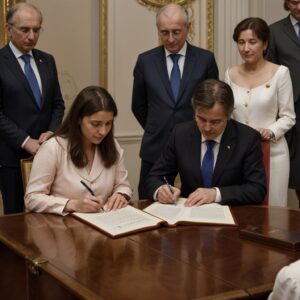In the early 1990s, Europe stood at a crossroads. After decades of economic cooperation and political dialogue, the need for deeper integration among European nations became clear. This vision was realized on February 7, 1992, with the signing of the Maastricht Treaty, a landmark agreement that laid the foundation for what we now know as the European Union (EU). More than just a treaty, it was a bold step toward unity, prosperity, and a shared European identity.
The Maastricht Treaty had three main pillars. First, it formally established the European Union, giving it a political structure that extended beyond just economic cooperation. Second, it paved the way for the creation of a common currency—the euro—by setting strict economic and financial criteria that member states needed to meet. Third, it introduced European citizenship, allowing individuals to move, live, and work freely across member nations. This was a groundbreaking shift, reinforcing the idea that Europe was not just a collection of countries but a community of people.
Beyond economic and monetary policies, the treaty also strengthened cooperation in areas like foreign policy, security, and justice. It expanded the powers of European institutions, including the European Parliament, giving citizens a stronger voice in decision-making. The agreement also introduced policies on environmental protection, social rights, and public health, reflecting a broader commitment to the well-being of Europeans beyond just economic growth.
However, the treaty was not without controversy. Many feared that transferring power from national governments to a centralized European authority would erode sovereignty. In some countries, public resistance led to referendums, debates, and demands for renegotiations. Despite these challenges, the Maastricht Treaty was ratified, and on November 1, 1993, the European Union officially came into existence.
Today, the Maastricht Treaty remains one of the most significant agreements in modern European history. It transformed a vision of unity into reality, shaping the EU into a global political and economic powerhouse. While debates about integration and sovereignty continue, the treaty’s legacy is undeniable—it set the stage for a Europe that is more connected, cooperative, and influential on the world stage.

